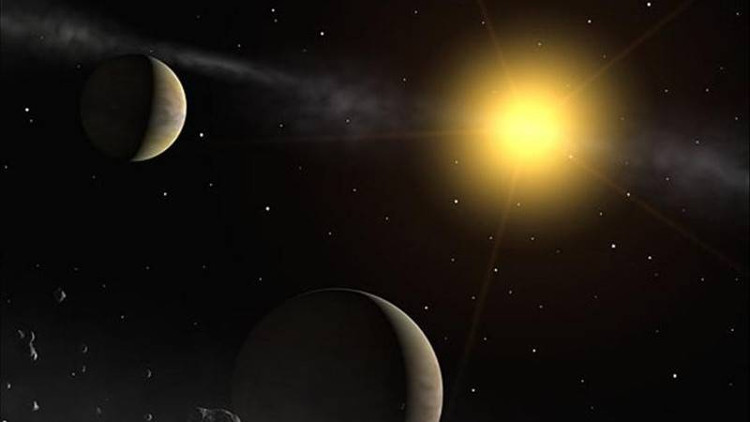Stars that can create comet rain destroy the Earth
A star about to crash into the solar system is becoming a leading threat to the Earth within the next 10 million years.
Data produced by the European Space Agency's Gaia Observatory showed that Gliese 710's bright-burning star could cause a life-threatening big comet rain on Earth, Gizmodo reported on Dec. 22.
In the discovery published in the journal Astronomy & Astrophysics, two researchers Filip Berski and Piotr Dybcz ởski at Adam Mickiewicz University, Poland, calculated the closest distance between the star and the solar system is nearly 5 times smaller than previously speculated.

Gliese 710 star illustration (Photo: ESA).
Many possibilities Gliese 710 will move through the Oort Nebula Cloud, gathering comets and ice objects around the solar system. If this happens, the strong gravitational force of a star that is about 60% of this Sun can cause the comet rain to change direction and target the Earth. Although some comets drift in space and some are sucked in by the Sun or another planet, astronomers warn that the Earth can be completely influenced.
According to the research team, Gliese 710 will not approach the Sun within 1.35 million years. Located in the Sepens Cauda constellation, Gliese 710 is 64 light-years from Earth. If it goes straight to the solar system, the distance between the Earth and this star will be 1.9 trillion km.
In the space field, the distance is considered close. The consequences when it came so close that Gliese 710 was considered one of the biggest threats to the Earth in the next 10 million years.
"We can predict that this star has the strongest effect on the Oort cloud in the next 10 million years. Over the past few million years, there have been such important objects near the Sun. The nearest way, the star will become the brightest and fastest object in the night sky. Gliese 710's motion will produce a large amount of stray objects that can attack the rim in the solar system " , the group study sharing.
- Discovering the 'culprit' caused the comet to crash into Earth
- Comet 26km wide can destroy the Earth in 4479
- The moment comets destroy mammoths on ancient stone pillars
- Comet is brighter than the full moon visiting Earth in 2013
- Top scientific events in 2005
- The ghostly green comet scene approaches the Earth
- Comets cause huge fire rain on Earth
- Comet detection is the brightest century
- Video: The comet moment escapes from the Sun.
- The new comet is approaching the sun
- Video: Comet hit the sun
- Why is the eggshell shaped comet?
 Van Allen's belt and evidence that the Apollo 11 mission to the Moon was myth
Van Allen's belt and evidence that the Apollo 11 mission to the Moon was myth The levels of civilization in the universe (Kardashev scale)
The levels of civilization in the universe (Kardashev scale) Today Mars, the sun and the Earth are aligned
Today Mars, the sun and the Earth are aligned The Amazon owner announced a secret plan to build a space base for thousands of people
The Amazon owner announced a secret plan to build a space base for thousands of people